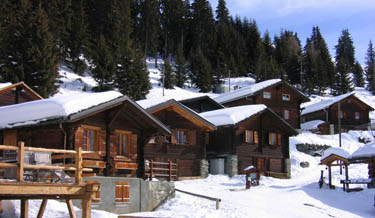Do protected areas increase development of adjacent lands?
 Development,
Development,  Protected Areas
Protected Areas  Credit, Norbert Aepli.The creation of protected areas has served as a cornerstone strategy of the conservation movement. However, a new study in the journal Conservation Letters finds evidence that in certain situations protected areas can have the perverse effect of increasing the likelihood of development on adjacent lands.
Credit, Norbert Aepli.The creation of protected areas has served as a cornerstone strategy of the conservation movement. However, a new study in the journal Conservation Letters finds evidence that in certain situations protected areas can have the perverse effect of increasing the likelihood of development on adjacent lands.
Daniel Kramer from Michigan State University and Patrick Doran from the Nature Conservancy looked a number of factors to explain development patters within a 2 km buffer around protected areas in Michigan. They found that land closer to protected areas was more likely to be developed.
While it is unclear why this occurs, some have theorized that parks, open space, and other preserved places improve amenity values spurring development in nearby areas.
However, the researchers found that a number of other factors were also important in explaining the patterns of land conversion. For example, they found evidence that parcels with more developed land in their vicinity and nearer roads and urban areas were more likely to be developed, which is a finding that one would expect.
Overall, the results from the study indicate a seemingly contradictory set of circumstances in which protected areas can both prevent and encourage development. The study authors warn conservation planners,
"Funds for conservation are scarce. The public wants assurances that funding is spent wisely. By inducing nearby residential development, protected areas might be subject to unwanted edge effects thereby reducing their conservation value. Perhaps more problematic, if the conservation value of land near, but outside protected areas, is greater than that of land within protected areas, induced development can cause a net decrease in the overall conservation value of the area"
--by Rob Goldstein
Kramer, D., & Doran, P. (2010). Land conversion at the protected area's edge Conservation Letters DOI: 10.1111/j.1755-263X.2010.00122.x




Reader Comments